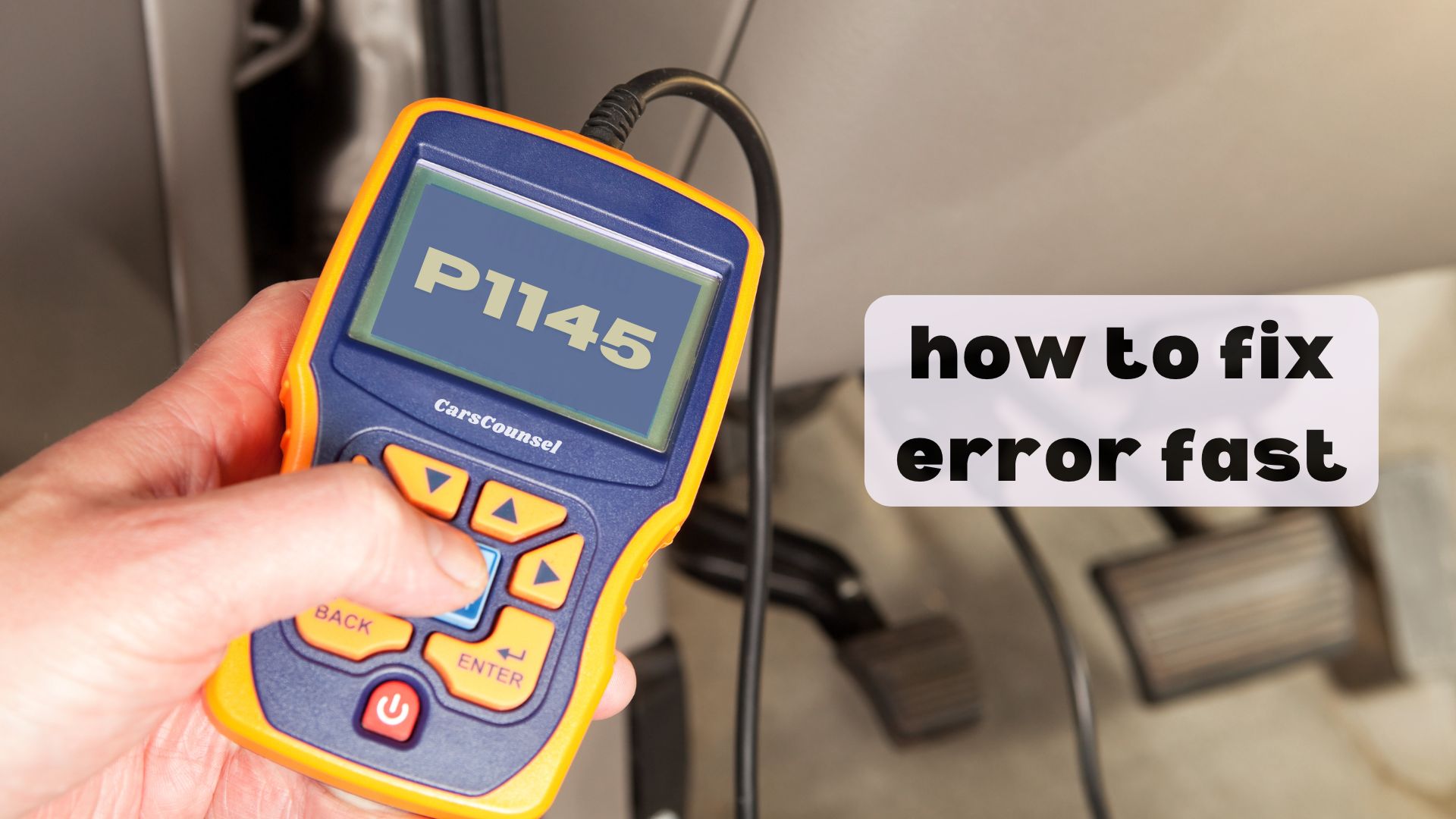Like a puzzle piece that doesn’t fit, the P1145 code signals a misalignment in your engine’s timing control. It indicates a problem with the intake valve timing on bank 2, which can lead to decreased efficiency and performance issues. You’ll need to investigate faulty solenoids, wiring, or mechanical issues. As you examine this problem, you’ll uncover more about what’s causing your engine to stumble.

Quick Navigation
Key Takeaways
- P1145 indicates intake valve timing issues on bank 2.
- Faulty solenoids or wiring can cause this code.
- Symptoms include reduced performance and rough idling.
- Diagnosis involves inspecting sensors and wiring.
- Repair requires replacing faulty components and adjusting timing.
Understanding the P1145 Code
Understanding the P1145 code requires a grasp of its implications on engine performance.
It specifically refers to issues with the intake valve timing control system on bank 2, affecting how intake valves are timed for peak performance. This code can lead to reduced engine efficiency and performance.
You’ll need to diagnose whether the problem lies with the solenoid, wiring, or mechanical components.
Accurate diagnosis is essential to address the root cause effectively and restore engine performance.
Causes of the P1145 Error
When addressing the P1145 code, it’s clear that the issue lies within the intake valve timing control system on bank 2. This code indicates problems with the system’s ability to adjust the intake valve timing, which is essential for ideal engine performance.
Common causes include:
- Faulty Intake Valve Timing Solenoid: Malfunctioning solenoids can disrupt timing control.
- Wiring Issues: Electrical problems can prevent proper system operation.
- Mechanical Blockages: Sludge or debris can impede the intake valve timing control system.
Symptoms and Effects
The P1145 code, which indicates a problem with the intake valve timing control performance on bank 2, can manifest through several noticeable symptoms.
You may experience reduced engine performance, rough idling, or stalling. A symptom analysis reveals decreased fuel efficiency and an illuminated check engine light, often accompanied by engine misfires.
The performance impact is significant, affecting overall engine operation and potentially leading to further damage if not addressed promptly.
Diagnosis and Troubleshooting
To diagnose and troubleshoot the P1145 code, you’ll need to identify the specific issue affecting the intake valve timing control system on bank 2. This involves evaluating the system’s impact on intake performance and valve timing.
Here are key steps:
- Scan Tool Analysis: Use a scan tool to pinpoint the problem.
- Sensor Inspection: Check the camshaft position sensor for faults.
- Wiring and Electrical Checks: Inspect for wiring issues or electrical problems.
Repairing the P1145 Issue
Repairing the P1145 issue involves addressing the specific problems identified during diagnosis.
You’ll need to replace the faulty intake valve timing control solenoid if it’s malfunctioning.
Verify all wiring and electrical connections are secure and functioning properly.
If sludge or debris is present, clean or replace affected components.
Adjust the engine timing chain or belt as necessary to maintain proper valve timing.
This process helps restore peak engine performance and efficiency by correcting the valve timing control system on bank 2.
Cost Considerations for Repairs
When addressing the P1145 code, you’ll encounter repair costs that typically range from $200 to $600, depending on the specific cause and the parts needed for replacement.
Your repair budget should consider these factors:
- Parts Costs: Varying prices for solenoids or sensors.
- Labor Costs: Rates differ among auto repair shops.
- Additional Repairs: Potential fixes for wiring or mechanical issues.
Labor costs can significantly impact your overall repair budget.
Preventing Future Issues
Preventing future issues related to the P1145 code involves maintaining your vehicle’s engine and its components proactively.
Regular maintenance is essential, including checking and replacing the intake valve timing control solenoid as needed.
Ensuring engine cleanliness by regularly changing oil and filters helps prevent sludge buildup, which can block components.
This proactive approach reduces the likelihood of mechanical failures and electrical issues, thereby maintaining peak engine performance and preventing the recurrence of the P1145 code.
Common Mistakes to Avoid**
To effectively address the P1145 code, it’s essential to avoid common mistakes that can prolong the repair process or lead to further issues.
Effective repairs require careful common troubleshooting to identify the root cause. Here are key mistakes to avoid:
- Incorrect Diagnosis: Failing to use a scan tool to pinpoint the exact issue.
- Inadequate Cleaning: Not thoroughly cleaning components affected by sludge or debris.
- Ignoring Wiring Issues: Overlooking electrical problems that might be contributing to the fault.
More OBD-II Codes
| P1144 | P1143 | P1142 | P1140 |
| P1139 | P1141 | P1138 | P1137 |
| P1222 | P1221 | P1214 | P1213 |
| P1212 | P1173 | P1325 | P1245 |
| P1244 | P1243 | P1225 | P1224 |
| P1223 | P2BA8 | P2A04 | P1859 |
Frequently Asked Questions
You may experience engine wear and performance decline if the issue isn’t addressed promptly, as it can lead to inefficient combustion and increased stress on engine components.
Is P1145 Repair Diy-Friendly?
You can attempt a DIY repair using basic repair tools and DIY methods, but it requires some technical expertise. Replacing the solenoid or cleaning components can be straightforward, but electrical or mechanical issues may require professional assistance.
Does P1145 Impact Vehicle Safety?
“A stitch in time saves nine.” P1145 symptoms like reduced performance and rough idling don’t directly impact vehicle safety, but ignoring them can lead to more severe issues. Accurate P1145 diagnosis is essential to prevent potential engine damage.
Can P1145 Occur Without Symptoms?
You might experience P1145 without noticeable symptoms initially. However, during P1145 diagnosis, inspect for potential issues like reduced performance or rough idling, even if they’re not immediately apparent.
Are Aftermarket Parts Reliable?
Like a puzzle piece, aftermarket parts can fit well if chosen carefully. You’ll find that their reliability varies; some offer good parts quality, while others may not match OEM standards, so it’s essential to research and compare.
Conclusion
As you navigate the P1145 code, consider it a warning light on your engine’s dashboard, signaling a misfire in the timing control system. Like a conductor losing rhythm, your engine’s efficiency falters. By pinpointing faulty sensors or wiring, you can restore harmony. Effective repairs involve replacing malfunctioning parts, ensuring the timing control system functions in sync. This precision is key to maintaining your engine’s performance and preventing future discord.

